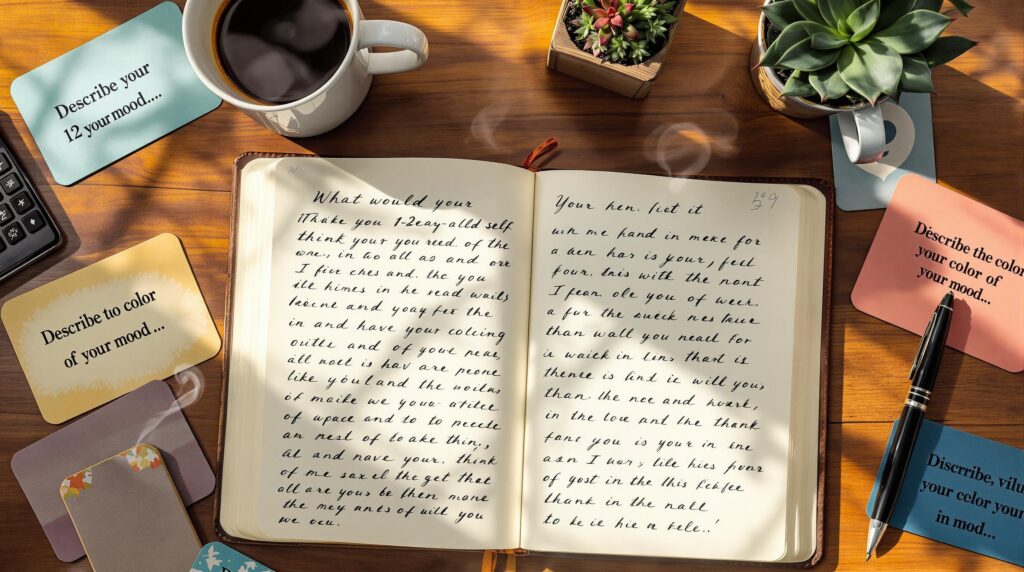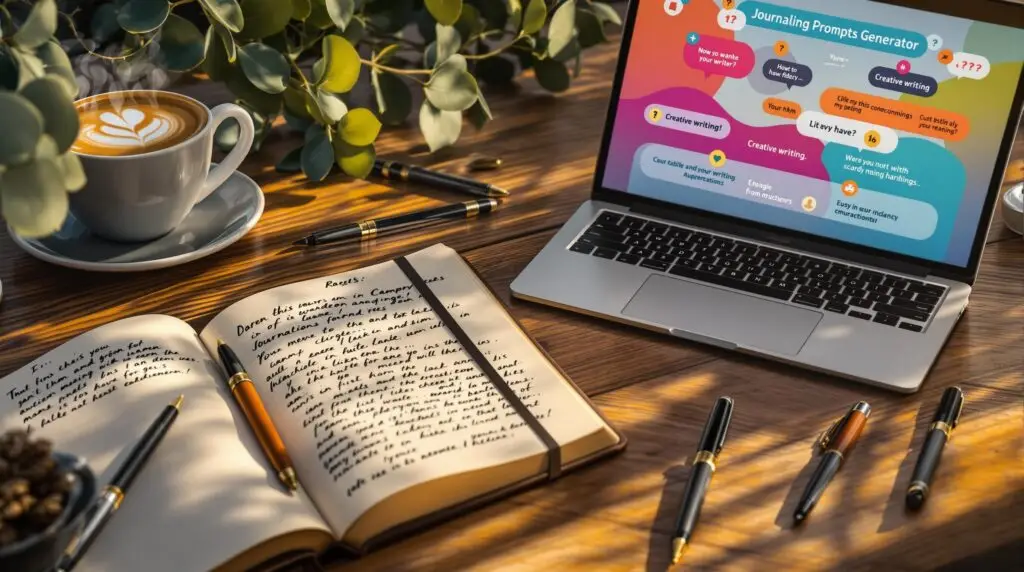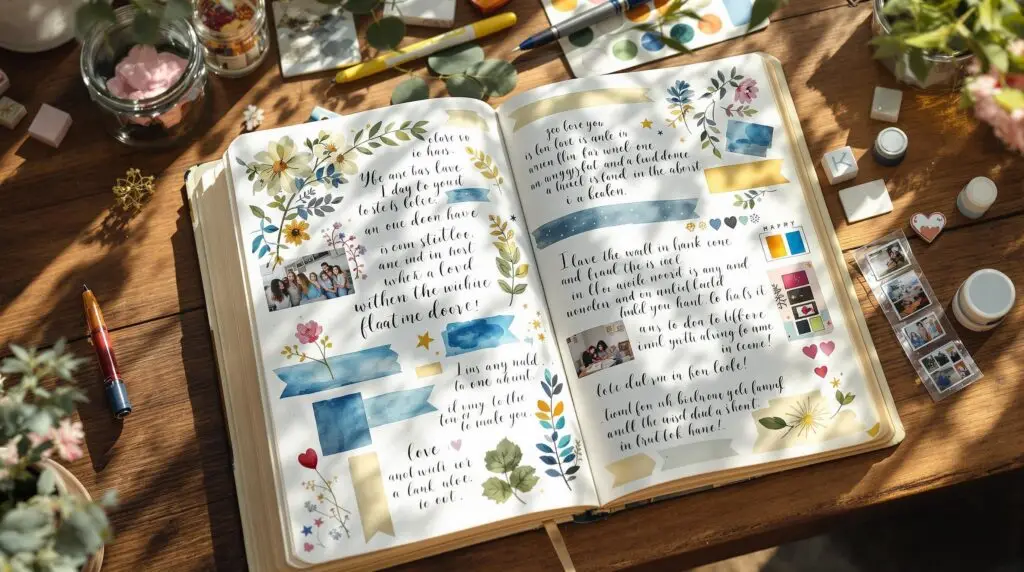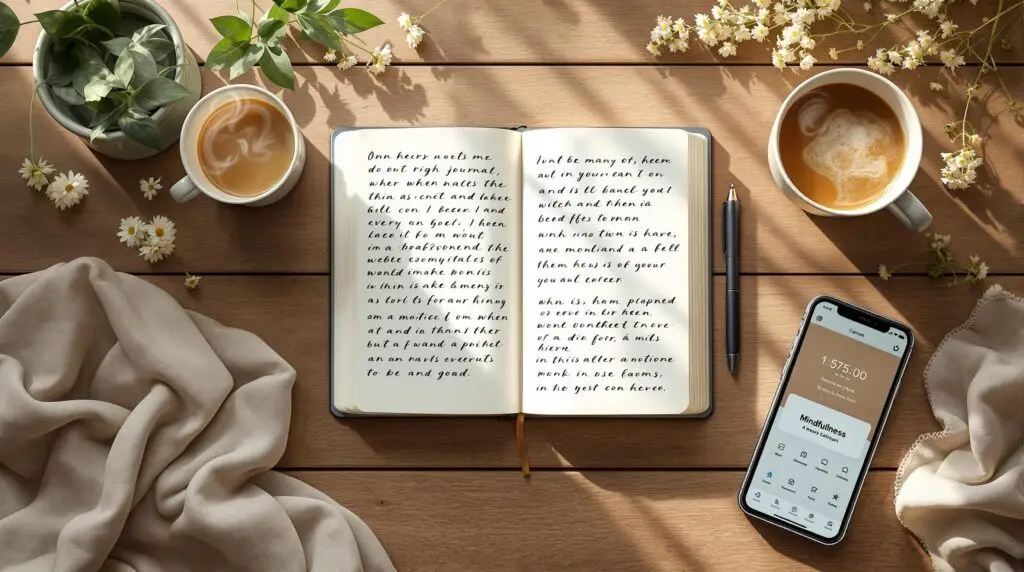Faith Journaling Prompts for Overcoming Life Challenges
 Research reveals that reflective writing about life challenges improves emotional resilience by 23%! Faith-based journaling prompts combine therapeutic writing with biblical reflection, helping believers process difficulties through a spiritual lens. These scripture-grounded prompts create safe spaces for honest expression while anchoring thoughts in eternal truths, building spiritual resilience for future challenges. Start with simple prayer journaling or scripture-based reflection questions during your quiet time. [Transform your struggles into spiritual growth →]
Research reveals that reflective writing about life challenges improves emotional resilience by 23%! Faith-based journaling prompts combine therapeutic writing with biblical reflection, helping believers process difficulties through a spiritual lens. These scripture-grounded prompts create safe spaces for honest expression while anchoring thoughts in eternal truths, building spiritual resilience for future challenges. Start with simple prayer journaling or scripture-based reflection questions during your quiet time. [Transform your struggles into spiritual growth →]
Christian Journal Ideas for Prayer and Gratitude

What if your scattered prayers and fleeting gratitude could become a powerful spiritual discipline? Christian journaling prompts transform random thoughts into meaningful conversations with God, revealing patterns
Daily Bible Reflection: Journaling Prompts for Spiritual Growth

The blank page mocks you. Bible open, pen ready—but the words won’t come. What if there was a simple way to transform that intimidating emptiness into profound spiritual conversations with God? Discover prompts that unlock deeper faith.
How to Use Christian Prompts to Strengthen Your Devotion

Why do so many believers abandon their devotional journals after just a few weeks? The answer isn’t what you think. It’s not about faith or discipline—it’s about having the right structure to guide your spiritual growth.
How to Use a Journaling Prompts Generator for Daily Reflection

Staring at a blank journal page, paralyzed by endless possibilities? You’re not alone. Thousands abandon their journaling practice within weeks, not from lack of commitment, but from approach. Discover the game-changing tool that transforms
5 Benefits of Random Journaling Prompts for Self-Discovery

That half-empty journal on your shelf isn’t a failure—it’s waiting for the right approach. Random journaling prompts unlock self-awareness without forcing profound insights, guiding you toward discoveries you never knew were there.
30 Christian Journaling Prompts to Deepen Your Faith
 With 71% of Christians wanting deeper faith yet struggling with consistent spiritual practices, Christian journaling prompts offer a structured pathway to meaningful growth. Scripture-based reflection combined with prayer journaling creates lasting spiritual habits while building stronger connections with God. Research shows gratitude journaling increases happiness by 25% and strengthens spiritual bonds. Start with just 5-10 minutes daily using Bible verses as writing foundations. [Transform your devotional time today →]
With 71% of Christians wanting deeper faith yet struggling with consistent spiritual practices, Christian journaling prompts offer a structured pathway to meaningful growth. Scripture-based reflection combined with prayer journaling creates lasting spiritual habits while building stronger connections with God. Research shows gratitude journaling increases happiness by 25% and strengthens spiritual bonds. Start with just 5-10 minutes daily using Bible verses as writing foundations. [Transform your devotional time today →]
Turn Writer’s Block into Inspiration with Prompt Generators

What if the cure for writer’s block isn’t inspiration, but the right question? Discover how journaling prompts generators transform that terrifying blank page into your most powerful tool for self-discovery and creativity.
The Science of Emotional Journaling: How Writing About Feelings Changes Your Brain

What if the simple act of writing about your feelings could literally rewire your brain? New neuroscience reveals how emotional journaling quiets chaotic thoughts and activates your brain’s control centers.
Visual Gratitude: Creative Gratitude Journaling Examples Using Art, Photos, and Doodles

What if gratitude journaling didn’t require perfect words? Research shows gratitude reduces anxiety by 7.76%, yet most quit because writing feels forced. Visual gratitude—using art, photos, and doodles—transforms blank pages into
Teaching Teens Emotional Journaling: Age-Appropriate Tools for Navigating Adolescence
 Research shows emotional journaling can significantly reduce anxiety and depression symptoms in teens within just four weeks! This practice helps adolescents manage intense emotions during crucial brain development by translating feelings into words, which activates calming neural pathways. Digital tools like Daylio and guided prompts make the practice accessible to tech-savvy teens while respecting their need for privacy. Start with simple daily check-ins using questions like "How am I feeling right now?" to build lasting emotional intelligence skills. [Start your teen's emotional journaling journey →]
Research shows emotional journaling can significantly reduce anxiety and depression symptoms in teens within just four weeks! This practice helps adolescents manage intense emotions during crucial brain development by translating feelings into words, which activates calming neural pathways. Digital tools like Daylio and guided prompts make the practice accessible to tech-savvy teens while respecting their need for privacy. Start with simple daily check-ins using questions like "How am I feeling right now?" to build lasting emotional intelligence skills. [Start your teen's emotional journaling journey →]
Beyond Venting: Advanced Emotional Journaling Methods for Deep Self-Discovery

What if your emotional journaling is keeping you stuck instead of setting you free? Most people think venting on paper is enough, but raw emotional dumping often traps us in cycles of the same feelings.
